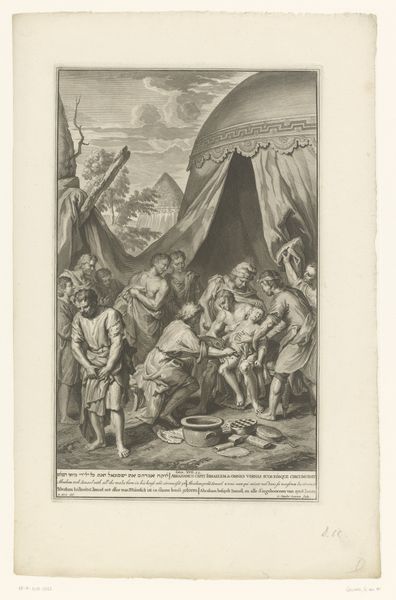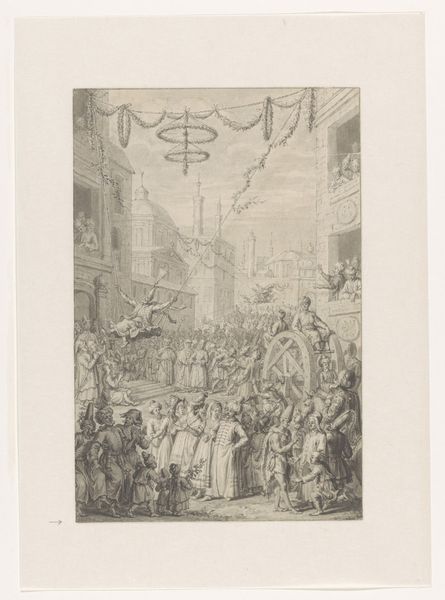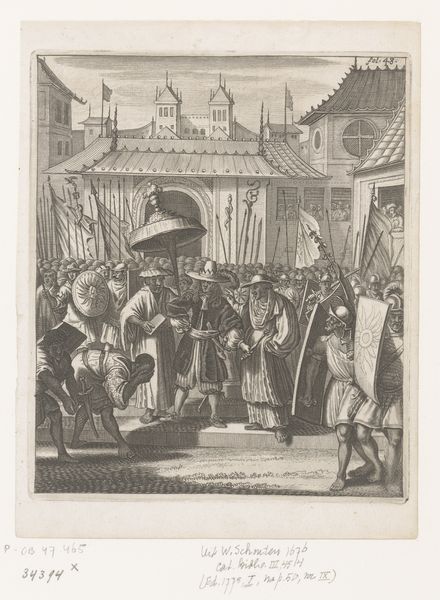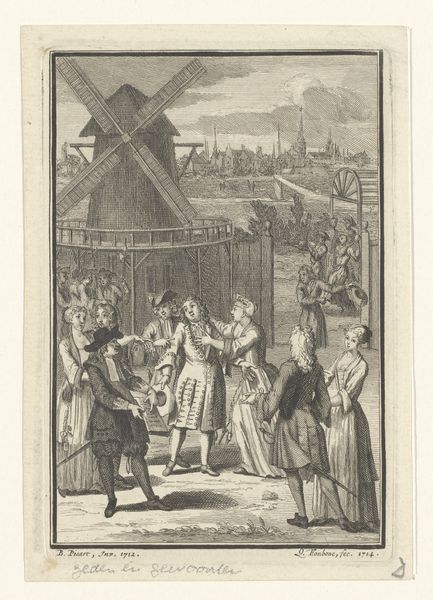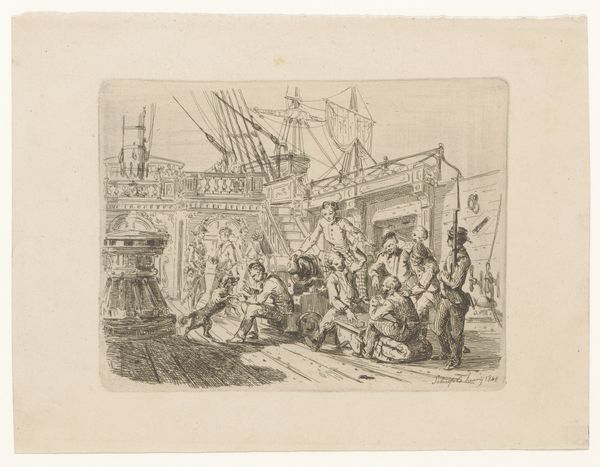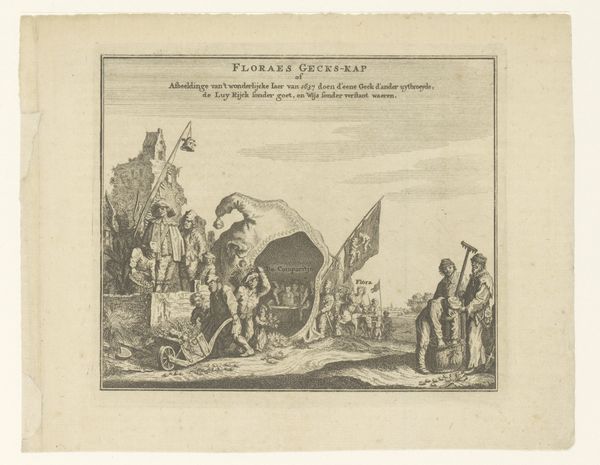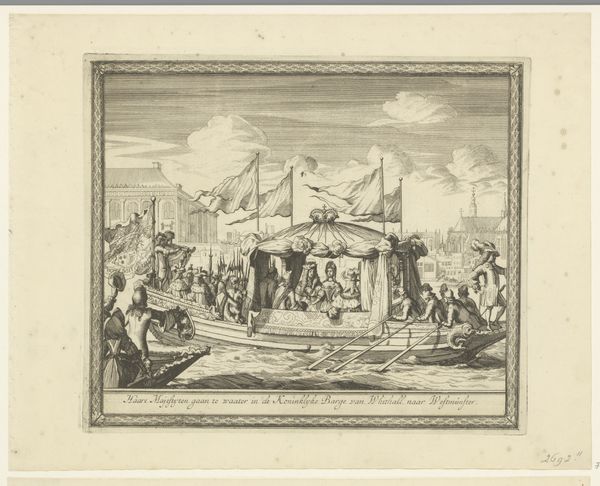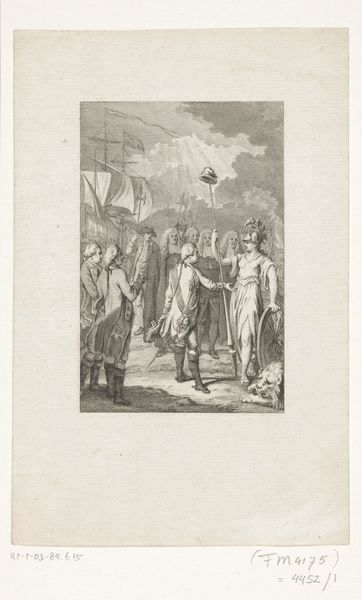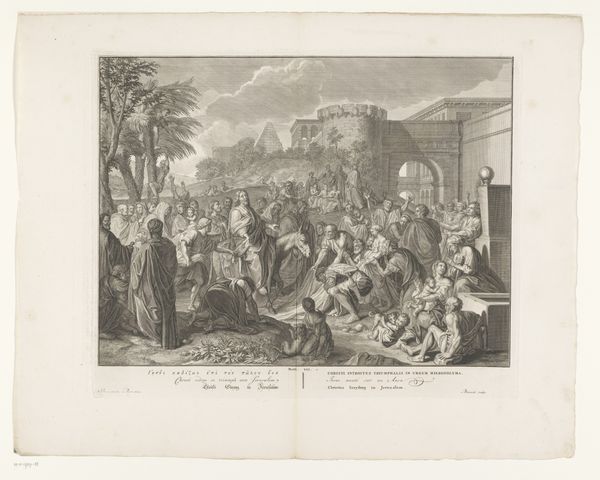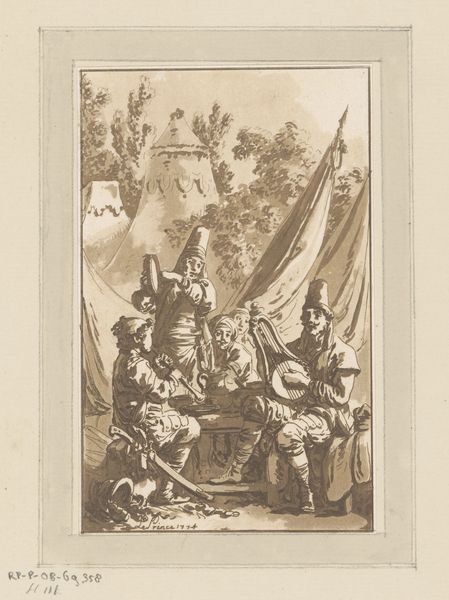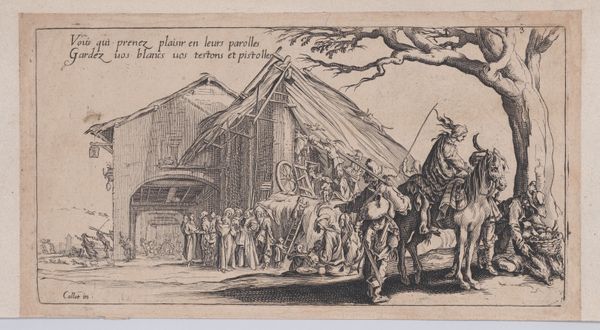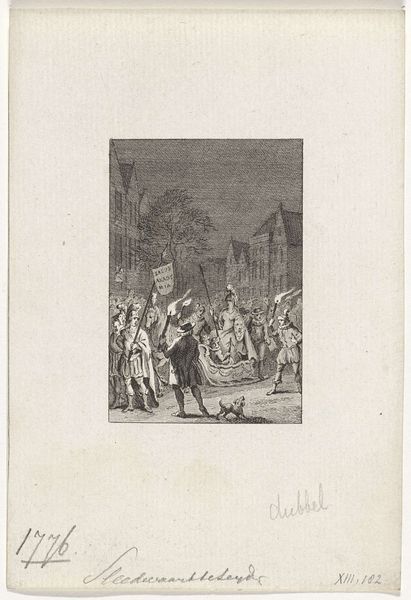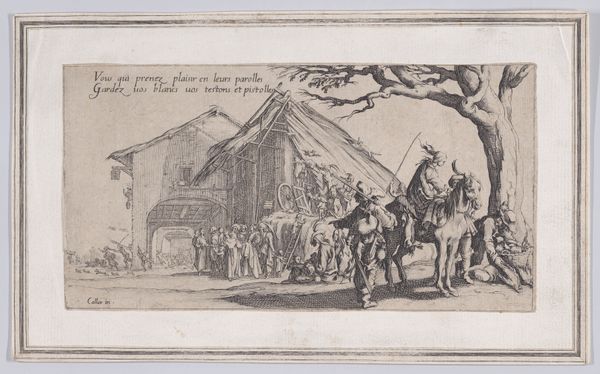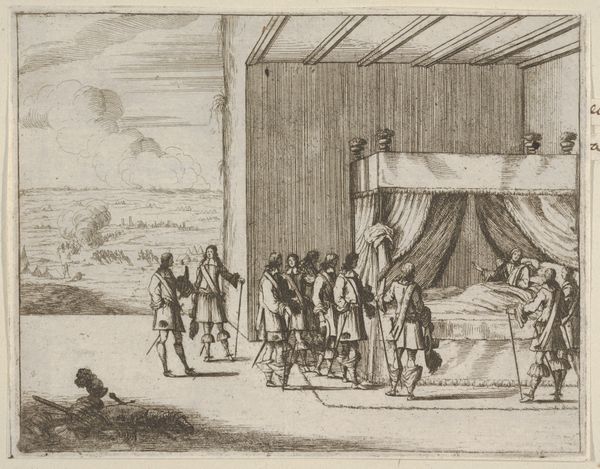
print, engraving
#
portrait
#
narrative-art
#
baroque
# print
#
old engraving style
#
line
#
genre-painting
#
history-painting
#
engraving
Dimensions: height 195 mm, width 153 mm
Copyright: Rijks Museum: Open Domain
Curator: This engraving, "Huwelijksceremonie in Batavia" or "Wedding Ceremony in Batavia", created anonymously in 1676, presents a fascinating, though likely romanticized, view of a wedding celebration. What strikes you immediately about it? Editor: All those lines! It’s almost claustrophobic, like a dense tapestry. The light, what little there is, seems artificial, strained to highlight the ceremony itself but really exposing the rigid, staged nature of the scene. Is that what passed for documentation back then? Curator: It gives us a glimpse into the social structures of the time. The line work is detailed, revealing nuances in costume, status, and ritual. Notice how labor and materiality are represented – the cloth of the tent, the weapons carried, even the attire indicates access and authority. What story do you think it's trying to tell? Editor: A tale of control and conquest, of course. The light falls very softly on the presumed wedding pair and yet seems more generally diffused over the amassed attendees, so a power relationship stands in the foreground here. The whole occasion takes place within what I suppose would be that carefully made tent structure in the style of what passes in European imaginations as “the Orient.” Everything seems calculated to underscore not the supposed event but the implied cultural differences and also what reads to me now as a stark expression of power. What a charade! Curator: I suppose. But look closer, though, and consider the Baroque style influencing even this depiction of Batavia, now Jakarta, Indonesia. What we consider reality always relies on creative interventions and individual perspectives—this piece isn’t untouched by creative intent. It feels oddly dreamlike— almost melancholic when I reflect that this historical depiction probably had its own layers of distortion. It reminds us to look past the surface, at how we've crafted stories about each other for centuries. Editor: It's like holding a mirror up to history. The material conditions of its creation—the printing press, the paper, the artist's labor—all speak to a particular moment in time, to technologies, social norms, and global exchange networks. The wedding, in that sense, is secondary to how it reveals a production process. So the truth it might contain relies as much on its creation, so it's just like, the technology is the message, right? I find it impossible not to question this particular historical document in front of us as a consequence. Curator: That's the beauty of art—it provokes. The echoes between cultures and technologies and our assumptions keep rippling through time, encouraging fresh perspectives, don't they? Editor: Indeed. An interesting intersection of labor and ritual represented by some mysterious lines!
Comments
No comments
Be the first to comment and join the conversation on the ultimate creative platform.
